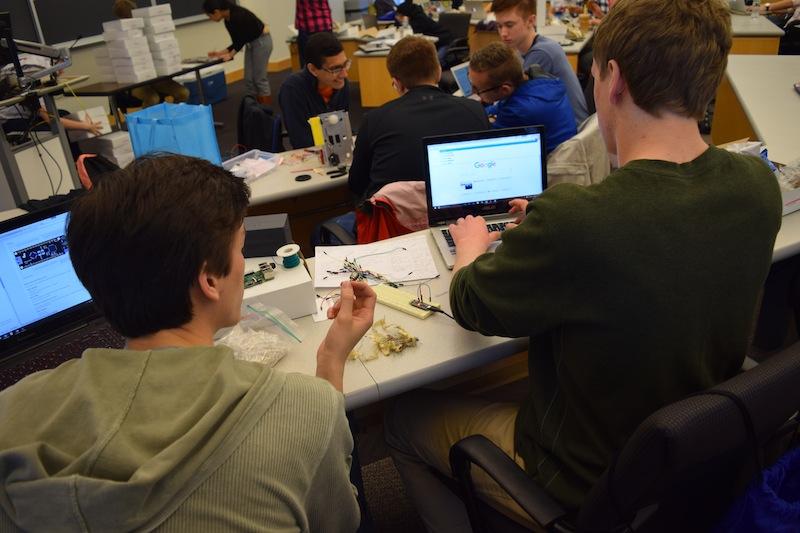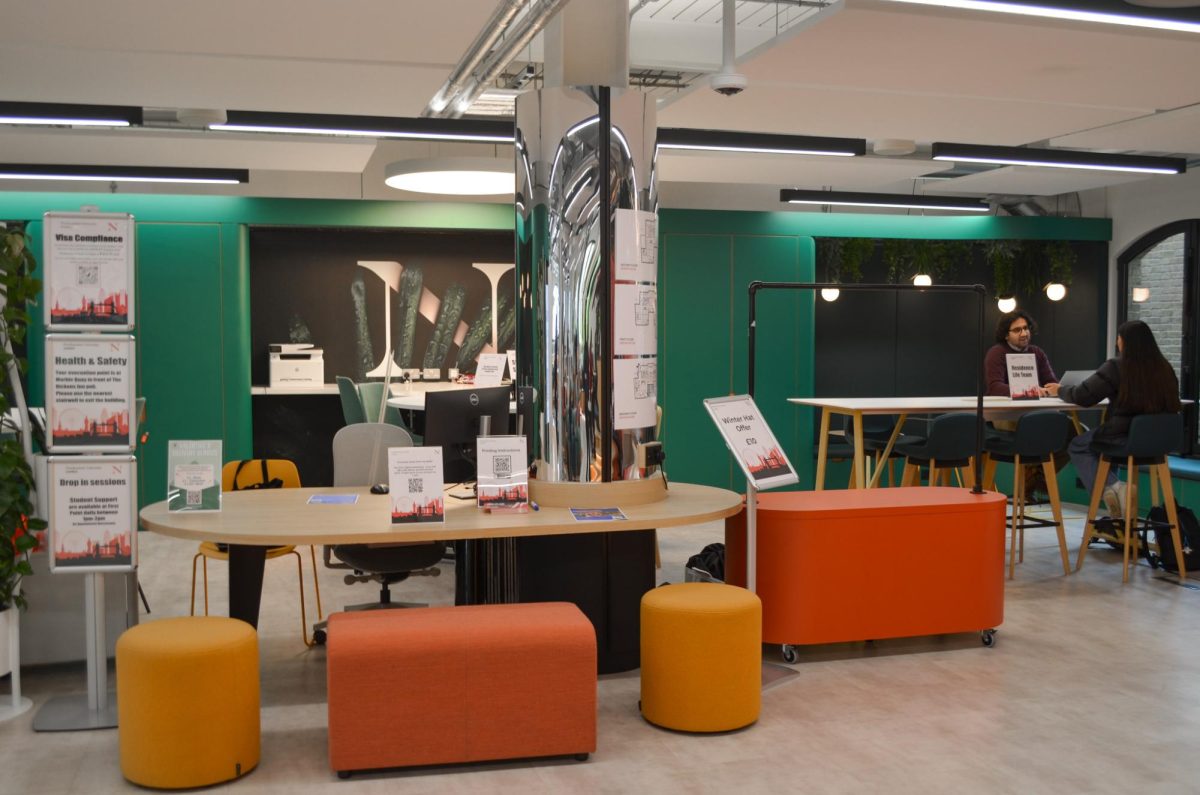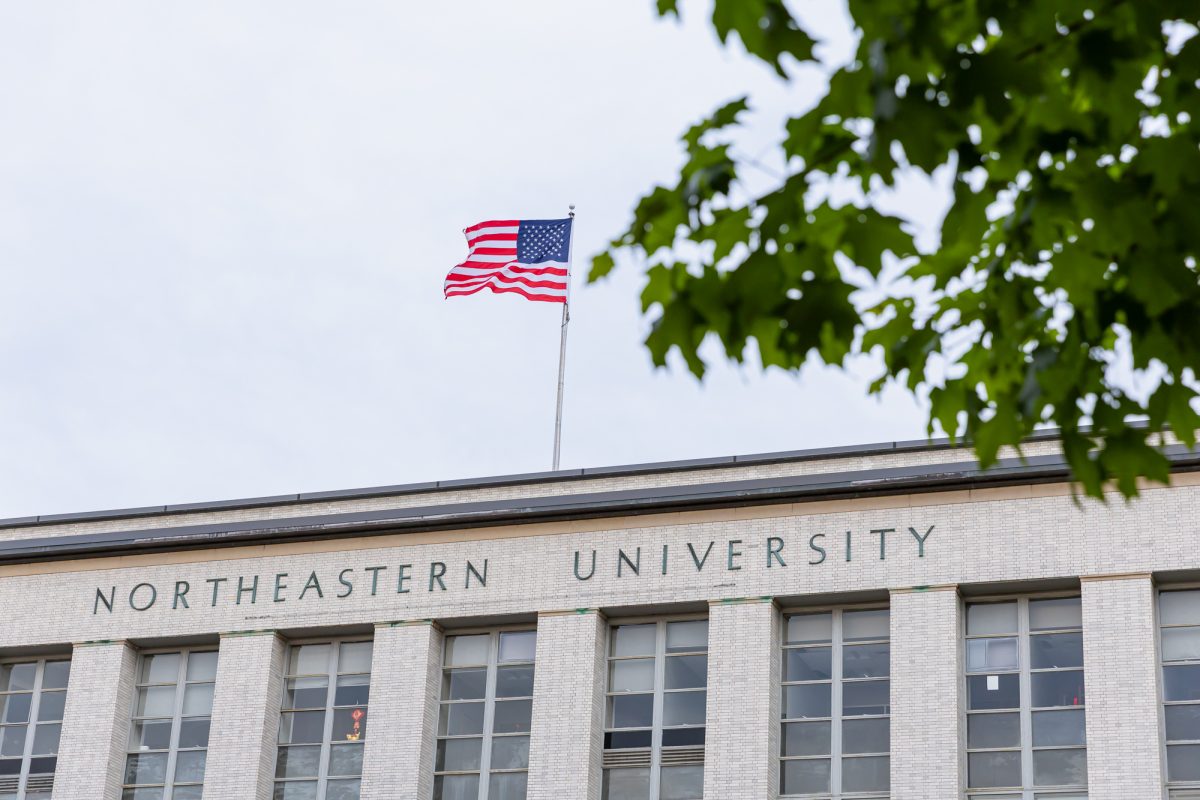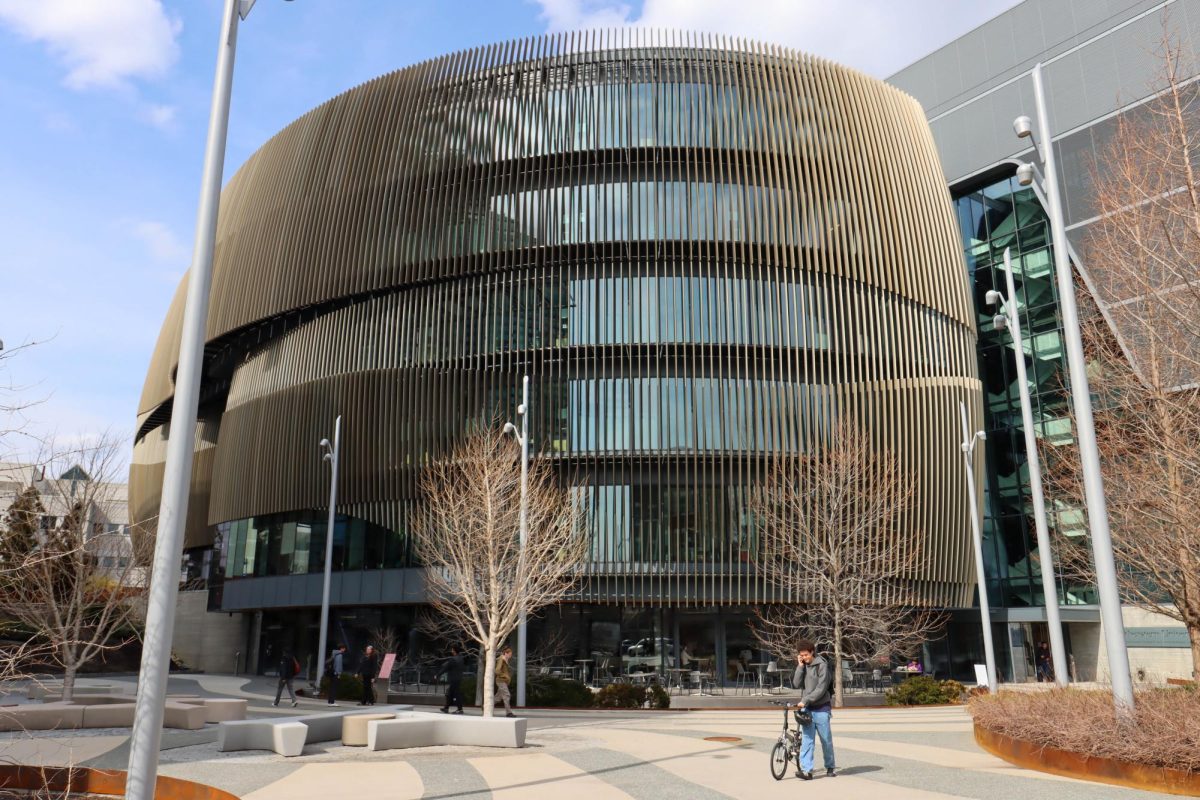By Olivia Arnold, news correspondent
Northeastern University (NU) students dedicated 22 hours to inventing robots and apps from scratch over the weekend at HuskyHacks, the College of Computer and Information Science’s first-ever hackathon.
A hackathon is a competition where students typically spend either 24 or 36 hours coding, building and creating softwares and hardwares to produce original projects. At HuskyHacks, which took place mainly in West Village H from noon, April 2 to 10 a.m., April 3, the 90 undergraduate techies developed inventions including a multiplayer word search game, an app that alerts users when Northeastern dining halls are serving their favorite foods and a Twitter account run by artificial intelligence.
“The name hackathon is sort of a misnomer,” said Eric Liu, a sophomore computer engineering major who helped organize the event. “You’re not doing more hacking. You’re doing more of building and inventing.”
Participants have a lot of freedom in choosing what they build at a hackathon, said Jake Messner, a HuskyHacks organizer and sophomore electrical and computer engineering dual major.
“You can use any programming language you want, whatever hardware you want,” Messner said. “Basically the only rules are you have to build something and it has to have something to do with computing.”
A main goal for HuskyHacks organizers was to create a comfortable environment for first-time hackers. Organizers enlisted 20 mentors, mostly upperclassmen with computer science and computer engineering academic and co-op experience, to provide guidance for first-time teams.
“It’s a silly idea to me that [first-time hackers are] not ready for a hackathon because […] hackathon is a place to learn,” said Niousha Jafari, a sophomore computer science major and organizer for the event.
Liu and Messner first began working with the administration to organize a Northeastern hackathon six months ago after competing in similar events around the country and realizing how beneficial the event would be in promoting the university’s computer science and engineering programs, Messner said. Jafari, also an avid hackathon participant, initiated talks with CCIS to host a hackathon last year, and began collaborating with Messner for HuskyHacks in late January.
“Northeastern didn’t have a hackathon, and as engineers who like to be up and coming with tech, [Liu and I] said this is really something that Northeastern needs to have if we want to be a leader in technology,” Messner said.
Three prizes were awarded at the hackathon: Best first-time hack, best design and most technically challenging. A panel of five judges reviewed all the teams in an initial round, and then seven teams advanced to the next stage, where they had to present their projects and provide live demonstrations to all attendees and two final judges.
A pseudo-segway robot, described on HuskyHack’s website as a “self-balancing, autonomous robot,” won best first-time hack. The Hook, a text message reminder application that “uses human accountability” by sending reminders to the user and a friend, won best design. GPU NoSQL database, a Graphics Processing Unit (GPU) database that can access digital data and perform operations faster than a traditional database without using Structure Query Language (SQL), a programming language commonly used in database management, won most technically challenging.
Winners were awarded plaques and will receive Visa gift cards with an amount that has not yet been determined, said Jafari.
HuskyHacks fulfilled another goal of proving to Northeastern administration that there was a need and an interest in hackathons on campus, the organizers said. Now, the three aim to organize a larger hackathon in the fall, with more corporate sponsors and participants.
In addition to benefitting the university, hackathons also teach students valuable coding and technical skills that they can then put on their resumes and reference in co-op interviews, Liu said.
“At some sort of thing like a job fair, yeah, you can talk to a recruiter and give them your resume, but it’s so much more awesome if you can show them, ‘Hey I made this in 24 hours,’” Liu said. “It’s such a great opportunity for students to really apply what they’ve done.”
Photo courtesy Jake Messner















